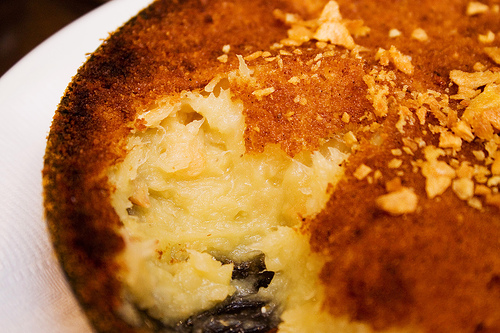My next stop is only a short drive down the valley: the Château de Chenonceau. This castle was a private residence until the King of France's widow, Catherine de' Medici (daughter of Lorenzo II de' Medici) decided that it should belong to her.
About 6 miles away from the Château de Chenonceau is the Château de Amboise and Leonardo da Vinci's mansion Clos Lucé. Like Chenonceau, Amboise was a privately owned castle until the royalty confiscated it. The moral of this story is, if you build a castle too fancy, it'll get taken away. Da Vinci's home was connected by an underground tunnel into the castle.
Between Amboise and my next stop is the city of Tours. The city is amazing and worthy of a quest of its own. Like much of France, they are proud of their meat, so I'll just have to suffer with delicious goat cheese and a sweet bread called fouace. Mmm.
Not much further down the river is the Château de Villandry, another private castle confiscated, this time during the French Revolution, and given as a gift to Napoleon's brother Joseph. It is currently privately owned, but open to the public. Its main attraction is its extensive garden.
Finally I came to the Château d'Ussé. If this castle seems familiar it might be because Walt Disney used it as one of a few that inspired the castles in his movies.
If I was fantastically wealthy, I'd have some really nice gardens and a river front home like all these ones, but a lot smaller. It would be hell to clean all of that space.
http://en.wikipedia.org/wiki/Ch%C3%A2teau_de_Chambord
http://en.wikipedia.org/wiki/Ch%C3%A2teau_de_Chenonceau
http://en.wikipedia.org/wiki/Ch%C3%A2teau_d%27Amboise
http://www.tours-tourisme.fr/city-of-gastronomy.html
http://en.wikipedia.org/wiki/Ch%C3%A2teau_de_Villandry
http://en.wikipedia.org/wiki/Ch%C3%A2teau_d%27Uss%C3%A9

















































